USA Coin Album: The Last Gasp of the New Orleans Mint
Posted on 3/12/2019
With the commencement of coinage at the new Denver Mint in 1906, it was anticipated by the Treasury that the venerable New Orleans Mint would no longer be needed. Authorized in 1835, along with two other Southern mints in Charlotte, North Carolina, and Dahlonega, Georgia, by 1906 the old "O" Mint on Esplanade Avenue in the city's French Quarter was the only survivor.
Like the others, it had ceased coin production with the onset of America's Civil War in 1861, but passage of the Bland-Allison Act in 1878 created a need for its services to both coin and store the millions of unwanted silver dollars that law mandated. When the bullion allotted for silver dollars under this and a subsequent bill in 1890 finally ran out in 1904, the writing was on the wall.
Despite the high productivity of Denver's facility, the New Orleans Mint soldiered on for several more years. It was an obsolete and inefficient operation, its cost per coin manufactured being noticeably higher than at the other mints.
The end came when the US Mint's budget for Fiscal Year 1910 (which began July 1, 1909) included no funding for coining operations at New Orleans. Instead, the facility was reduced to the status of federal assay office, a fate it then shared with the former Carson City Mint in Nevada. On a positive note, both are now excellent and very popular museums.
Before its coin funding ran out, however, New Orleans struck three denominations in silver and one in gold. All of these were produced in just the first three months of 1909 and are highly prized by collectors, yet only one is expensive enough to be an obstacle to ownership. The others are readily available in worn condition and make for interesting memorial issues to this storied institution.
The most often seen 1909-O coin is the Barber dime, of which some 2,287,000 pieces were struck. This total greatly exceeded the production of dimes at the Denver and San Francisco Mints that year, and only Philadelphia contributed a higher figure. It may be that this issue was selectively saved once the collecting of coins from circulation became popular in the 1930s.
Worn pieces are fairly plentiful through the grade of Very Fine, though Extremely Fine and About Uncirculated coins are a bit more scarce. Mint state survivors, though sometimes not fully struck, are available, becoming rare only at the gem level (MS 65 and higher). There are no notable varieties, the "O over inverted D" reverse illustrated in David Lawrence's book on the Barber dime series being just an example of strike doubling.
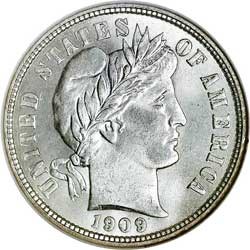 |
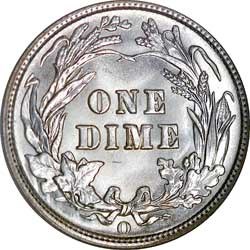 |
| 1909-O Barber Dime Click images to enlarge. |
|
The 1909-O quarter dollar shares Charles Barber's Liberty portrait with the dime, but that's where the similarity ends. A mere 712,000 pieces were coined, and this issue is recognized as very scarce in worn condition and genuinely rare in mint state. Current values clearly reflect this status, and pieces grading XF 40 and higher carry four-to-five-figure prices. Well worn examples, while difficult to locate, are less expensive and quite desirable.
Since most 1909-O quarters are weakly struck at their centers, grading is a bit of a challenge. Circulated pieces are graded by overall wear, rather than relying on specific features such as the letters of LIBERTY. There are no confirmed varieties for 1909-O quarters, the doubled-die reverse illustrated in David Lawrence's Barber quarter book being yet another case of simple strike doubling.
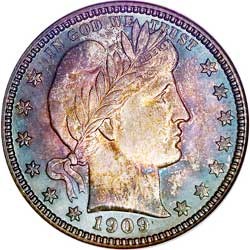 |
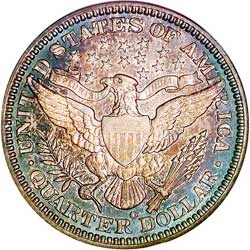 |
| 1909-O Barber Quarter Click images to enlarge. |
|
Half dollars, too, were coined at the New Orleans Mint in its final year of operation. The total struck was 925,400 pieces, a bit low for coins of this type, yet circulated examples are fairly available (and affordable). Only in About Uncirculated grades and higher is this issue scarce, and even mint state examples are more available than one would expect from the mintage.
Most, however, are a bit softly struck at their high points, and some even reveal a slight case of "mumps," which is a sinking of the dies that's evident as raised areas on Liberty's neck and jaw. No varieties have been reported for 1909-O. As with the dime and quarter, the date was applied directly to the 1909 master die, so there's no possibility of a repunched date variety.
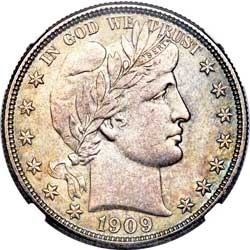 |
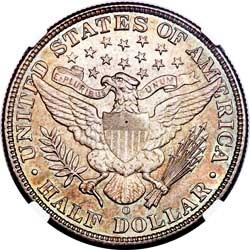 |
| 1909-O Barber Half-Dollar Click images to enlarge. |
|
The key to completing a set of 1909-O coins is certainly the gold half eagle. The New Orleans Mint had not struck any five-dollar pieces since 1894, and why it did so in 1909 is something of a mystery. In any case, the demand must have been quite limited, as a mere 34,200 examples were produced.
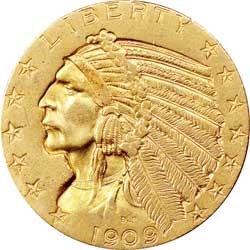 |
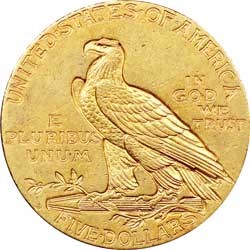 |
| 1909-O Gold Half Eagle Click images to enlarge. |
|
This coin is very scarce in any grade, and mint state examples are genuinely rare (the fairly high populations published by grading services likely include some duplication). At NGC, we see a great many would-be 1909-O half eagles that turn out to be worn or poorly struck examples of the very common 1909-D. Since many of the 1909-O half eagles did enter general circulation, distinguishing between D and O pieces can be very tricky, poorly struck pieces making the task all the more challenging.
David W. Lange's column, “USA Coin Album,” appears monthly in The Numismatist, the official publication of the American Numismatic Association.
Stay Informed
Want news like this delivered to your inbox once a month? Subscribe to the free NGC eNewsletter today!
